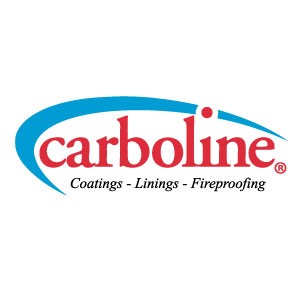
Sooner or later, it is inevitable that all concrete will begin to crack. That is just the nature of the beast—or, in this case, the substrate. The question every facility owner or maintenance manager should ask is not "if" but "why," "when," and "how." By taking this approach, you will begin to understand what causes concrete to crack, how to minimize cracking as much as possible, and recommended methods for repairing cracks that form on concrete floors.
What Causes Concrete to Crack?
As a starting point, it is essential to understand the various factors that can cause concrete to develop cracks in the first place. For the sake of this article, we will discuss the two main causes of cracking: concrete shrinkage and structural movement of a building due to stress.
When concrete is poured, it contains a mixture of water, cement, and gravel. As concrete cures, it has a natural tendency to shrink, which can lead to cracks developing. If not immediately, these cracks will eventually show at the surface. A crack that results from concrete shrinkage is generally referred to as a "static"—or fixed, non-moving—crack.
On the other hand, concrete can form cracks due to stress-related structural movement. This typically results in a "dynamic" crack, which means that the crack will naturally expand and contract with temperature, humidity, and load stress changes.
Surface Preparation Requirements for Cracked Concrete
When you're dealing with cracked concrete, the surface preparation requirements will greatly depend on the type of coating system that is being installed. First and foremost, it is crucial to follow any specific requirements outlined in your coating manufacturer's product data sheet for the given coating system. This will serve as your primary information source.
Above this, the Concrete Surface Profile (CSP) guidelines have become an industry standard for coating manufacturers. They are used to determine the surface preparation requirements for various concrete texture profiles. To date, a total of ten levels of increasingly more aggressive profiles have been developed by the International Concrete Repair Institute. As a general rule of thumb, the thicker the specified coating system or overlay, the deeper the profile needed to anchor it, equating to a higher CSP coupon number.
How to Minimize & Repair Concrete Cracks
Now that we understand why concrete cracks form and the steps that should be followed to prepare your concrete surface properly, let's discuss the recommended methods for minimizing and repairing different types of cracks in your coated concrete floors.
1. Place Joints in Your Concrete
Placing joints along various pressure points in a concrete slab will go a long way in helping to minimize concrete cracks in your coated flooring system. There are two main types of joints that are important to understand: control joints and expansion joints.
A control joint is meant to control cracking by weakening the concrete at these joints to minimize shrinkage cracks and "control" where they will appear. In contrast, an expansion joint is designed to withstand structural movement by allowing for thermal expansion and contraction within concrete.
Placed prior to pouring the concrete slab, an expansion joint involves the complete structural separation between two or more building components. This joint typically ranges from ¼" to 1" in width but can run up to 20" wide.
With a control joint, on the other hand, several grooved joints are saw cut at ¼ the total thickness of a concrete slab as soon as 18 hours after it is placed. For example, a 4-inch-thick slab would require a control joint one inch in depth.
Although there are many key differences between these two types of joints, they both ultimately serve as ways to minimize uncontrolled, random cracking to protect the structural integrity of your concrete floors.
2. Use a Backer Rod & Flexible Sealant
When repairing a static crack or control joint, the standard protocol is to fill the full thickness of the crack with an epoxy putty, grind it until it is smooth, then place your high-performance coating system over the top.
On the other hand, dynamic cracks are more complex and require special attention. Treating them properly will require the use of a backer rod and flexible sealant. The backer rod—a soft and pliable filler designed to partially fill dynamic cracks or joints—is inserted as a barrier to control sealant depth and prevent three-sided adhesion.
Most larger expansion joints must then be filled with a flexible sealant to allow for dynamic structural movement. To achieve optimal elongation, the depth of the sealant should be half the width of the joint. This is critical to maintaining the elongation properties of the flexible sealant.
Additionally, the diameter of the backer rod must match the width of the expansion joint or dynamic crack. If the backer rod is too large, the flexible sealant will protrude as the concrete expands and contracts. On the flip side, if your backer rod is too small, it will be impossible to maintain the proper depth-to-width ratio.
3. Honor Any Transitions in Your Concrete Floor
Whenever a flooring system is terminated, that transition will need to be keyed into the concrete with a saw cut to give the coating system an anchor point. Drains, doorways, and other transitions also fall into this category. If the transition is not keyed, the coating edges will inevitably become chipped and damaged over time. If left untreated, this can lead to a much larger failure of the surrounding coating system.
As we've already discussed, a backer rod and flexible sealant will need to be used when treating dynamic concrete cracking. However, before they can be placed, the coated edges must first be routed and tucked down into the joint to protect them from foot or vehicle traffic. Generally, this involves removing a strip of the coating from the floor approximately six inches in width—or three inches on each side of the joint.
Once the backer rod is placed, it's critical that the joints not be filled flush with the flexible sealant, as this would forfeit its optimal elongation properties. Instead, the sealant should be tooled concave at a depth half the width of the joint—leaving a smooth, continuous surface. This allows for thermal expansion and contraction.
Selecting the Right Product for Cracked Concrete Repair
Depending on the floor topping or coating at hand, a variety of vinyl ester and epoxy fillers can be used to repair static cracks and control joints. In fact, Scratch Coat 300 and Scratch Coat 800 are ideal for this application—almost like an industrial-grade Bondo. General-purpose polysulfide sealants, like Caulk PSC, are very popular for dynamic cracks involving structural movement.
In the case of a secondary containment area where higher chemical resistance is needed for a concrete floor with expansion joints, the chosen sealant should be compatible with the specific chemical exposures at play. For example, a Viton sealant is recommended for expansion joints within containment areas exposed to high sulfuric acid levels. This is because, if a spill occurs, other polysulfide or silicone caulks would be eroded.

